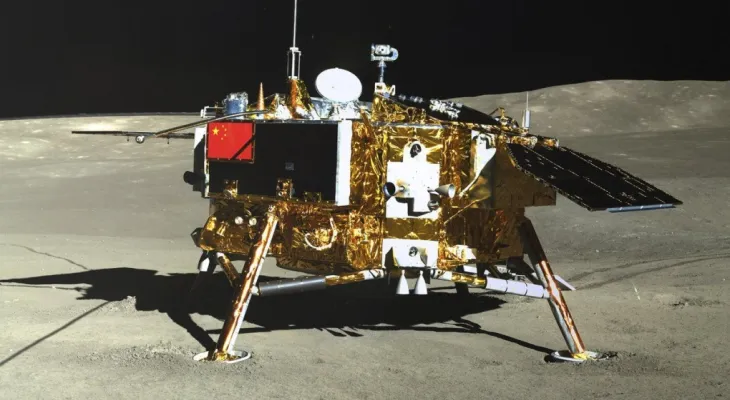Search here
Newspaper
Search here

Arab Canada News
News

Published: June 2, 2024
A Chinese spacecraft landed on the far side of the moon on Sunday to collect samples of soil and rocks that could provide insights into the differences between the less-explored region and the more famous near side.
The China National Space Administration said the landing unit touched down at 6:23 AM Beijing time in a massive crater known as the South Pole-Aitken basin.
This mission is the sixth in the Chang'e lunar exploration program, named after the Chinese moon goddess. It is the second designed for sample return, following Chang’e 5, which did so from the near side in 2020.
The lunar program is part of the growing competition with the United States - which remains a leader in space exploration - and other countries, including Japan and India. China has established its own space station in orbit and regularly sends crews there.
The emerging global power aims to send a human to the moon before 2030, making it the second country after the United States to do so. America plans to land astronauts on the surface of the moon again - for the first time in over 50 years - although NASA has postponed the target date to 2026 earlier this year.
The United States' efforts to use private sector rockets to launch spacecraft have been repeatedly delayed, and a last-minute computer problem resulted in the cancellation of a scheduled launch for Boeing's first astronaut flight on Saturday.
Earlier on Saturday, a Japanese billionaire canceled his plan to orbit the moon due to uncertainty over the development of a massive rocket by SpaceX. NASA plans to use the rocket to send its astronauts to the moon.
In China's current mission, the lander will use a mechanical arm and drill to collect up to two kilograms (4.4 pounds) of surface and subsurface materials for about two days.
After that, one of the ascenders will take the samples contained in a vacuum-sealed container to another unit orbiting the moon. The container will be transferred to a return capsule that is scheduled to return to Earth in the deserts of China’s Inner Mongolia region around June 25.
Trips to the far side of the moon are more challenging because it does not face Earth, requiring a satellite to maintain communications. The terrain is also more rugged, with fewer flat areas to land on.
Comments